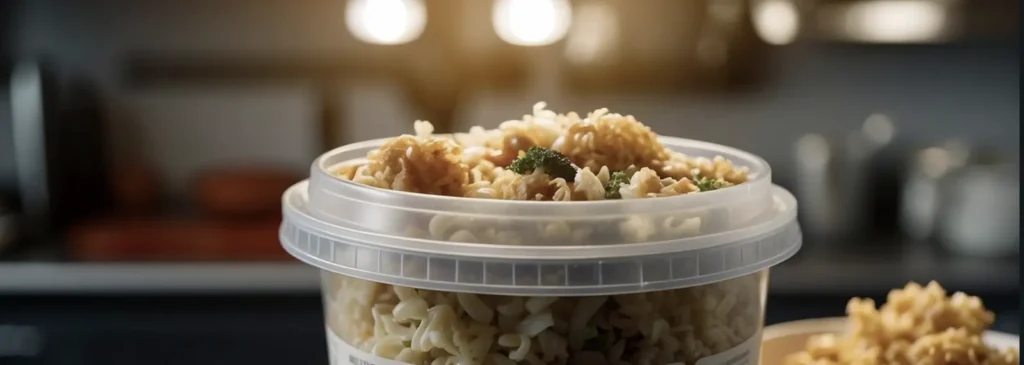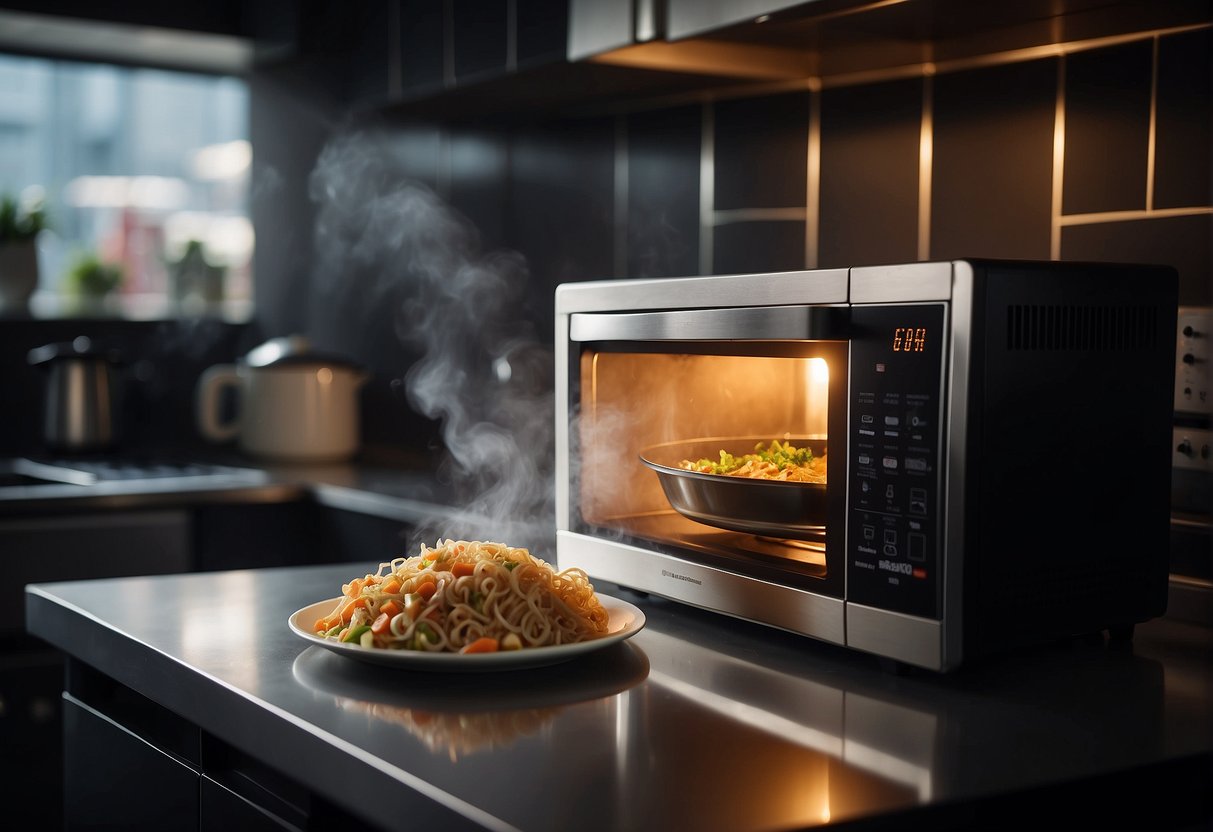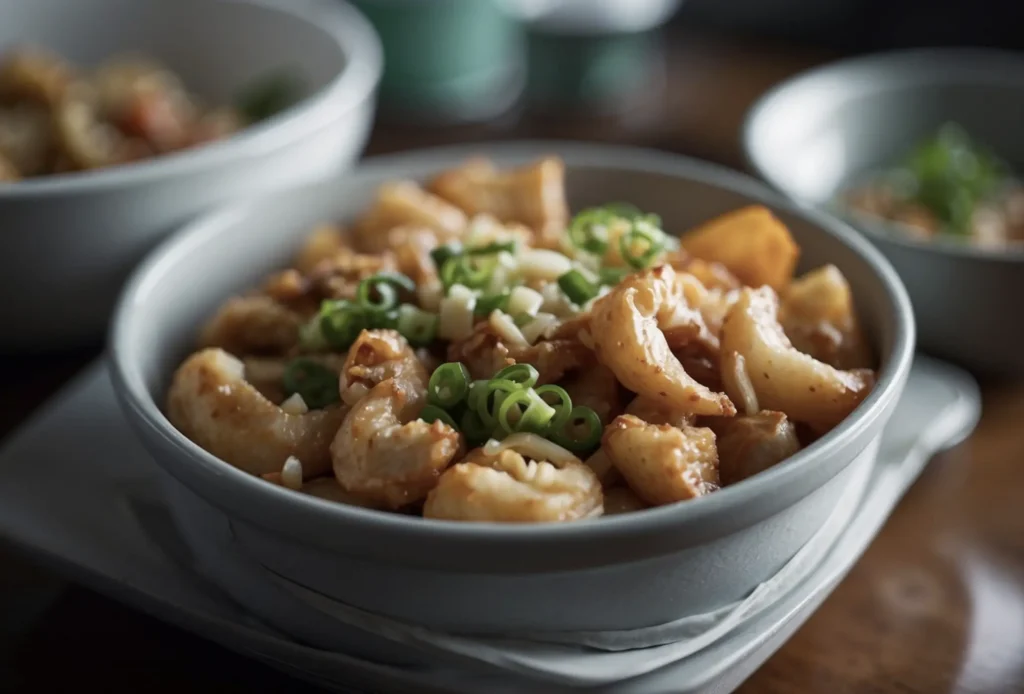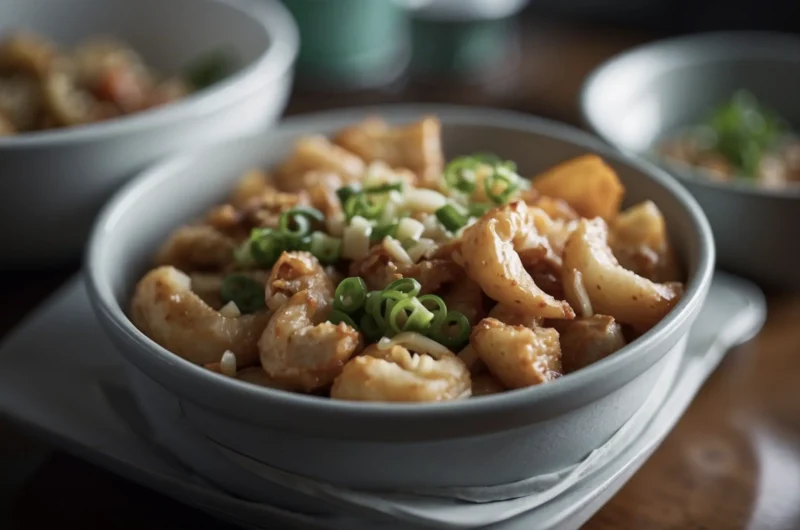When I think about enjoying a takeout meal, Chinese food often comes to mind. It’s flavorful, has a variety of dishes, and the portions are usually generous enough to ensure leftovers. But how long is leftover Chinese food good for? Based on food safety guidelines, including those provided by the U.S. Department of Agriculture, it’s clear that properly storing and handling leftovers is crucial for health and safety. Generally, leftover Chinese food is safe to eat for about three to four days when stored in the refrigerator at temperatures below 40 degrees Fahrenheit.

I’m aware that the shelf life of leftovers can be extended if they’re frozen. Freezing Chinese dishes, especially rice-based meals, can last for a couple of months without a significant loss of flavor. However, it’s not just about time. I also pay attention to the way the food is stored. Leftovers that are cooled should be placed in an airtight container soon after the meal to minimize exposure to bacteria and to maintain freshness. I always make sure the food is cooled to room temperature before refrigerating to prevent bacteria that could spoil the food.
Determining Shelf Life
When I assess the shelf life of Chinese leftovers, my primary focus is on the growth of harmful bacteria and the effects of temperature. These two crucial factors will determine how long you can safely enjoy your food.
Understanding Bacteria Growth
Harmful bacteria proliferate in the “danger zone,” a temperature between 40 to 140 degrees Fahrenheit. Chinese leftovers must cool down to the right temperature before refrigeration. I make sure to store them at a safe temperature below 40 degrees Fahrenheit. This helps slow bacterial growth and extends the food’s shelf life.
Temperature Impact on Leftovers
Chinese leftovers should be kept at a correct temperature to maintain their quality. When out of the fridge, they should not remain in the danger zone for over 2 hours. In my experience, maintaining Chinese food at a particular temperature of 40 degrees Fahrenheit or colder in the refrigerator safeguards its edibility for 3-4 days. Temperature deviation could mean shorter shelf life due to increased risk of bacterial growth, making the food unsafe to consume.
Proper Storage Techniques

When it comes to conserving the flavor and safety of leftover Chinese food, the storage approach is critical. I focus on using secure containers and adhering to optimal refrigeration habits to ensure longevity.
Best Containers for Preservation
Airtight containers are paramount for keeping leftover food fresh. I always opt for glass or BPA-free plastic containers to store my Chinese takeaway. Sealing the food tightly minimizes exposure to air, which can carry contaminants and lead to spoilage. I’ve found that thinner, sauces-based dishes fare better in these airtight conditions, as they remain moist and flavorful.
Ideal Refrigeration Practices
Ensuring that your fridge is set below 40°F is non-negotiable for preserving perishable food. I strategically place my leftovers on the back of the fridge where it’s coldest. This also protects them from temperature fluctuations that occur when you open the door. Storing the food within two hours of receiving it, is the best way to be on the safe side; this significantly reduces the risk of bacterial growth.
Signs of Spoilage
When assessing whether leftover Chinese food has spoiled, I rely on specific indicators that can denote the quality of the food has deteriorated, potentially leading to a risk of food poisoning or bacterial growth.
Visual and Olfactory Cues

In my experience, if old Chinese food has taken on an unusual color or shows signs of mold, it’s a clear visual cue that it should not be consumed. A sour or off smell is another definitive sign that the food may have gone bad. Trusting my senses is key.
- Color Changes: Look for any discolorations or signs of mold.
- Odors: Give the food a good sniff; if it doesn’t smell like it did when it was fresh, I’d be cautious.
Physical Textural Changes
I’ve noticed that a slimy film on the surface of the food is a strong indicator that the leftovers have spoiled. Also, if the texture has changed significantly, such as if vegetables have become mushy or meats have a grainy feel, these are signs the food may no longer be safe to eat.
- Slimy Film: Detecting a slime layer, especially on meats, is a definite spoilage sign.
- Changed Textures: Contrast the current texture with the fresh state; substantial deviation often means quality loss.
Remember, consuming spoiled food can lead to health risks, so when in doubt, I recommend erring on the side of caution. If leftovers exhibit any of these spoilage signs, it’s safest to dispose of them.
Heating and Consumption

When reheating leftover Chinese food, I prioritize safety and quality. Achieving the proper internal temperature and using the correct reheating techniques can significantly impact the taste and safety of the food.
Reheating for Best Quality
For the best quality, I ensure that dishes, especially those like leftover rice or noodles, are heated to 165°F as measured by a food thermometer. This temperature ensures that any potentially harmful bacteria are eliminated. I start by spreading the food out evenly in a pan or skillet and heat it on medium heat, occasionally stirring to heat the food evenly. When dealing with items from Chinese restaurants, which often contain a mix of vegetables and proteins, I might heat in stages. I would start with items that require a longer cook time and add more delicate ingredients toward the end.
- Rice Dishes: Heat on medium, adding a little water to reintroduce moisture, cover the pan to steam the rice.
- Vegetables and Meats: Heat individually or together, stirring frequently for even heating.
Safe Consumption Practices
When reheating any leftovers, including leftover pizza or Chinese food, I always serve the food hot, immediately after reheating to minimize the risk of foodborne illnesses. I never reheat the same portion more than once, as fluctuating temperatures can increase the risk of bacteria growth. If I am reheating hot food for a group, I portion the food beforehand and only reheat what will be consumed to ensure that the fresh food is served at appropriate temperatures. It is advisable to divide large amounts into smaller portion sizes to cool faster and reheat more effectively.
Beyond the Basics: Tips and Guidelines
When dealing with leftovers, especially Chinese cuisine, knowing how to rejuvenate and maximize the shelf life of your food can make a significant difference. Let’s dive into some advanced strategies.
Food Rejuvenation Tricks
Reviving leftovers might seem challenging, but with the right techniques, I can bring back that fresh-from-the-restaurant taste. For dishes like fried rice or noodles, which can become dry when refrigerated, I usually add a little water or oil before reheating. This introduces moisture back into the dish. If I’m dealing with cold rice, a sprinkle of water and a brief stint in the microwave can do wonders.
For crispy items that have lost their crunch, such as egg rolls or spring rolls, I turn to my air fryer. Just a few minutes at a low temperature and they come out almost as good as new. Alternatively, wrapping them in foil and heating them in a slow cooker on low for a couple of hours can also restore their appeal.
Maximizing Leftover Usability
When it comes to the longevity of my leftovers, there are a couple of tricks to extend their edibility well beyond the stand-by of tossing everything into the fridge. First and foremost, I make use of the use-by date of the freshest ingredient as a guideline for the final dish. This helps me err on the side of caution, ensuring food safety.
To retain quality over several days, I always store my Chinese leftovers in airtight containers. This limits exposure to air, slowing down the spoilage process to a large extent. If I know I won’t consume the leftover food within a day or two, freezing is a viable option. That being said, not all dishes freeze well—sauces thickened with cornstarch or dishes with high water content can separate or become soggy once thawed. But items like dumplings or meats in sauce can handle the cold well.
In addition, I sometimes repurpose ingredients. A stir-fry, for example, can become a flavorful addition to a homemade soup or a filling for wraps or omelets. A dash of soy sauce or a drizzle of olive oil can often refresh flavors that have mellowed. Remember, keeping your reheating temperatures low and even is crucial. It means that your dish will heat throughout without becoming overcooked on the edges or remaining too cold in the center.
Frequently Asked Questions
In considering how long leftover Chinese food is safe for consumption, I’ve gathered the most common queries. My responses are grounded in both culinary experience and food safety guidelines.
Is it safe to consume Chinese food that is several days old?
It’s generally safe to eat leftover Chinese food up to 3-4 days after if it has been stored properly in the refrigerator at or below 40°F (4°C). Beyond this timeframe, the risk of foodborne illness increases.
What is the maximum duration for safely storing Chinese food in the refrigerator?
Chinese food should be stored in the refrigerator for no more than 3-4 days. Items should be placed in airtight containers to maintain quality and prevent contamination.
After how many days is it recommended not to eat Chinese takeaway?
I recommend not eating Chinese takeaway after 3-4 days of refrigeration. As some dishes may spoil quicker than others, it’s essential to use your senses to check for any signs of spoilage before consumption.
Does Chinese chicken have a different storage life compared to other leftovers?
Chinese dishes with chicken do not markedly differ in storage life from other leftovers, remaining safe for 3-4 days in the fridge. Using the same storage practices for any meat-based dish is advisable.
What are the best practices for reheating Chinese food to ensure it’s safe to eat?
Reheat Chinese food until it reaches an internal temperature of 165°F (74°C). Ensure even reheating to eliminate potential bacteria. Microwaving in intervals or using a stove can help achieve this.
Are there any specific considerations for the shelf-life of Chinese rice dishes?
Chinese rice dishes, like fried rice, are prone to bacterial growth if not handled properly. Store quickly after cooking and keep refrigerated for no more than 3-4 days to maintain safety.
| Chinese Dish | Refrigerator (40°F or below) | Freezer (0°F) |
|---|---|---|
| Spring Rolls | 3-4 days | 1-2 months |
| Fried Rice | 5-7 days | 1-2 months |
| Noodles | 3-5 days | 1-2 months |
| Dumplings | 3-5 days | 2-3 months |
| Sweet and Sour Pork | 3-4 days | 2-3 months |
| General Tso’s Chicken | 3-4 days | 2-3 months |
| Mapo Tofu | 3-4 days | 1-2 months |
| Peking Duck | 3-4 days | 2-6 months |
Asian-inspired shrimp and rice
Course: DinnerCuisine: ChineseDifficulty: Easy2
servings15
minutes20
minutesThis easy and flavorful dish brings the fresh taste of sweet and spicy shrimp, tender rice, and vibrant scallions to your dinner table.
Ingredients
1 lb shrimp, peeled and deveined
2 cups white rice
4 cups water
1 tablespoon vegetable oil
3 cloves garlic, minced
1 teaspoon grated ginger
1/4 cup soy sauce
2 tablespoons oyster sauce
1 tablespoon honey
1 teaspoon sesame oil
1/4 teaspoon red pepper flakes (optional)
4 scallions, sliced
Sesame seeds for garnish
Directions
- Rinse the rice under cold water until the water runs clear. In a medium saucepan, combine the rice and water. Bring to a boil over high heat, then reduce the heat to low, cover, and simmer for 15-20 minutes, or until the rice is tender and the water is absorbed.
- While the rice is cooking, heat the vegetable oil in a large skillet over medium heat. Add the garlic and ginger, and sauté for 1-2 minutes until fragrant.
- Add the shrimp to the skillet and cook for 2-3 minutes on each side, or until they turn pink and opaque.
- In a small bowl, whisk together the soy sauce, oyster sauce, honey, sesame oil, and red pepper flakes. Pour the sauce over the shrimp in the skillet and toss to coat. Cook for an additional 1-2 minutes until the sauce thickens slightly.
- Fluff the cooked rice with a fork and divide it among serving plates. Top the rice with the shrimp and sauce, and garnish with sliced scallions and sesame seeds.
- Serve the Asian shrimp on white rice with scallions immediately and enjoy!

